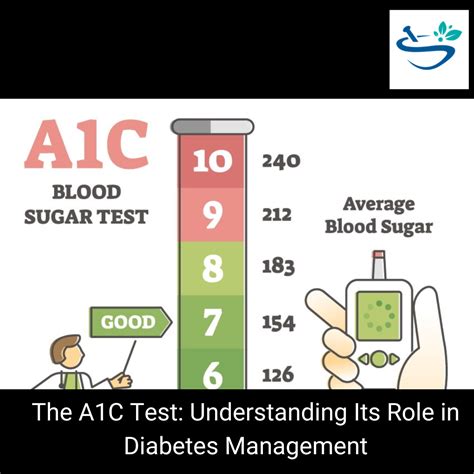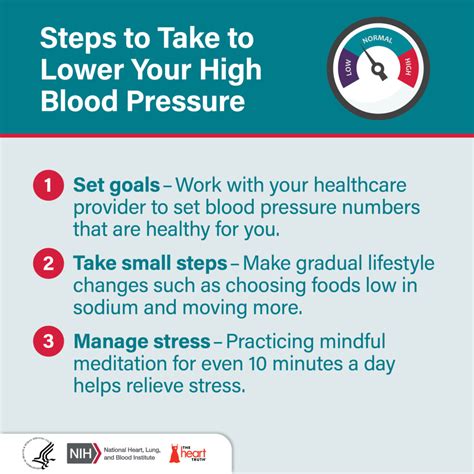Intro
Normal hemoglobin A1c levels are a crucial indicator of blood sugar control, particularly for individuals with diabetes. Hemoglobin A1c, often abbreviated as HbA1c, is a form of hemoglobin that is bound to glucose. The HbA1c test measures the average level of glucose in the blood over the past 2 to 3 months. It's a vital tool for diagnosing diabetes, monitoring the effectiveness of treatment plans, and assessing the risk of complications associated with diabetes.
Understanding what constitutes a normal hemoglobin A1c level is essential for managing and preventing diabetes. The American Diabetes Association (ADA) provides guidelines for HbA1c levels, categorizing them as follows: normal, prediabetes, and diabetes. For most adults, a normal HbA1c level is below 5.7%. Levels between 5.7% and 6.4% indicate prediabetes, a condition where blood sugar levels are higher than normal but not high enough to be classified as diabetes. An HbA1c level of 6.5% or higher is generally considered diagnostic of diabetes.
Maintaining normal hemoglobin A1c levels is crucial for preventing the complications of diabetes, such as heart disease, kidney disease, and nerve damage. Lifestyle changes, including a healthy diet, regular physical activity, and maintaining a healthy weight, can help manage blood sugar levels and reduce the risk of developing diabetes. For individuals with diabetes, working closely with healthcare providers to develop a personalized treatment plan, which may include medication, monitoring, and lifestyle adjustments, is key to achieving and maintaining target HbA1c levels.
Understanding Hemoglobin A1c

Understanding how hemoglobin A1c works and what factors can influence HbA1c levels is vital for interpreting test results accurately. Hemoglobin is a protein in red blood cells that carries oxygen to different parts of the body. When glucose is present in the blood, it binds to hemoglobin, forming glycated hemoglobin or HbA1c. The higher the blood glucose levels, the more hemoglobin gets glycated. Since red blood cells have a lifespan of approximately 120 days, the HbA1c test reflects average blood glucose levels over the past 2 to 3 months.
Several factors can affect HbA1c levels, including the lifespan of red blood cells, which can vary among individuals. Conditions that shorten the lifespan of red blood cells, such as hemolytic anemia, can lead to falsely low HbA1c readings. On the other hand, conditions that increase the lifespan of red blood cells can result in higher HbA1c levels. Other factors, such as certain medications, kidney disease, and liver disease, can also impact HbA1c test results.
Importance of Maintaining Normal Levels

Maintaining normal hemoglobin A1c levels is crucial for overall health, particularly for individuals with diabetes. High blood sugar levels over time can lead to serious health complications, including cardiovascular disease, nephropathy (kidney disease), retinopathy (eye disease), and neuropathy (nerve damage). The risk of these complications increases with higher HbA1c levels. Therefore, achieving and maintaining target HbA1c levels is a key component of diabetes management.
For individuals without diabetes, maintaining normal HbA1c levels can help prevent the development of insulin resistance and type 2 diabetes. Lifestyle interventions, such as a balanced diet low in added sugars and saturated fats, regular physical activity, and maintaining a healthy weight, can help regulate blood sugar levels and reduce the risk of chronic diseases.
Benefits of Normal HbA1c Levels
The benefits of maintaining normal hemoglobin A1c levels are numerous and significant. They include:
- Reduced risk of diabetes-related complications
- Improved cardiovascular health
- Enhanced quality of life
- Reduced risk of cognitive decline
- Better management of blood pressure and cholesterol levels
Strategies for Achieving Normal Levels

Achieving and maintaining normal hemoglobin A1c levels requires a comprehensive approach that includes lifestyle modifications and, for individuals with diabetes, adherence to a prescribed treatment plan. Key strategies include:
- Healthy Diet: Focus on whole, unprocessed foods like vegetables, fruits, whole grains, lean proteins, and healthy fats. Limit intake of added sugars, saturated fats, and refined carbohydrates.
- Regular Physical Activity: Aim for at least 150 minutes of moderate-intensity aerobic exercise, or 75 minutes of vigorous-intensity aerobic exercise, or a combination of both, per week. Include strength-training activities at least twice a week.
- Weight Management: Maintaining a healthy weight can help regulate blood sugar levels and improve insulin sensitivity.
- Monitoring Blood Sugar: Regular monitoring of blood glucose levels can help individuals with diabetes understand how different factors, such as food and physical activity, affect their blood sugar and make informed decisions to maintain target levels.
- Medication Adherence: For individuals with diabetes, taking medications as prescribed by a healthcare provider is crucial for managing blood sugar levels and achieving target HbA1c levels.
Challenges and Considerations
Several challenges and considerations can impact an individual's ability to achieve and maintain normal hemoglobin A1c levels. These include:
- Access to healthcare and the cost of medications and supplies
- Socioeconomic factors, such as food insecurity and lack of safe spaces for physical activity
- Psychological factors, such as stress and depression, which can affect adherence to treatment plans
- Presence of other health conditions that can complicate diabetes management
Technological Advances and Future Directions

Technological advances are continually improving the management of diabetes and the measurement of hemoglobin A1c levels. Continuous glucose monitoring (CGM) systems, for example, provide real-time data on glucose levels, allowing for more precise management of diabetes. Advances in insulin pump technology and the development of closed-loop systems, which automatically adjust insulin delivery based on glucose levels, are also transforming diabetes care.
Future directions in diabetes management include the development of more sophisticated glucose monitoring technologies, advancements in insulin therapy, and the potential for stem cell therapies and other regenerative medicine approaches to restore pancreatic function in individuals with diabetes.
Role of Healthcare Providers
Healthcare providers play a critical role in helping individuals achieve and maintain normal hemoglobin A1c levels. This includes:
- Providing personalized treatment plans based on an individual's specific needs and health status
- Educating patients about diabetes management, including the importance of healthy lifestyle habits and adherence to medication regimens
- Monitoring progress and adjusting treatment plans as necessary
- Addressing barriers to care and connecting patients with resources to support diabetes management
Conclusion and Next Steps

Maintaining normal hemoglobin A1c levels is a critical aspect of diabetes management and prevention. By understanding the importance of HbA1c, implementing effective strategies for achieving and maintaining target levels, and staying abreast of technological advances and future directions in diabetes care, individuals can significantly improve their health outcomes and quality of life.
We invite readers to share their experiences and insights regarding maintaining normal hemoglobin A1c levels. How have you managed to keep your blood sugar levels under control? What challenges have you faced, and how have you overcome them? Your stories can inspire and inform others, contributing to a community of support and knowledge that is essential for managing and preventing diabetes.
What is a normal hemoglobin A1c level?
+A normal hemoglobin A1c level is below 5.7%. Levels between 5.7% and 6.4% indicate prediabetes, and an HbA1c level of 6.5% or higher is generally considered diagnostic of diabetes.
How often should I get my hemoglobin A1c levels checked?
+The frequency of HbA1c testing depends on your health status and whether you have diabetes. Generally, individuals with diabetes should have their HbA1c levels checked at least twice a year, while those without diabetes may need less frequent testing based on their risk factors and health status.
Can lifestyle changes alone lower my hemoglobin A1c levels?
+Yes, lifestyle changes such as a healthy diet, regular physical activity, and weight management can significantly lower HbA1c levels. For individuals with prediabetes or type 2 diabetes, these changes can sometimes normalize blood sugar levels and improve overall health.
